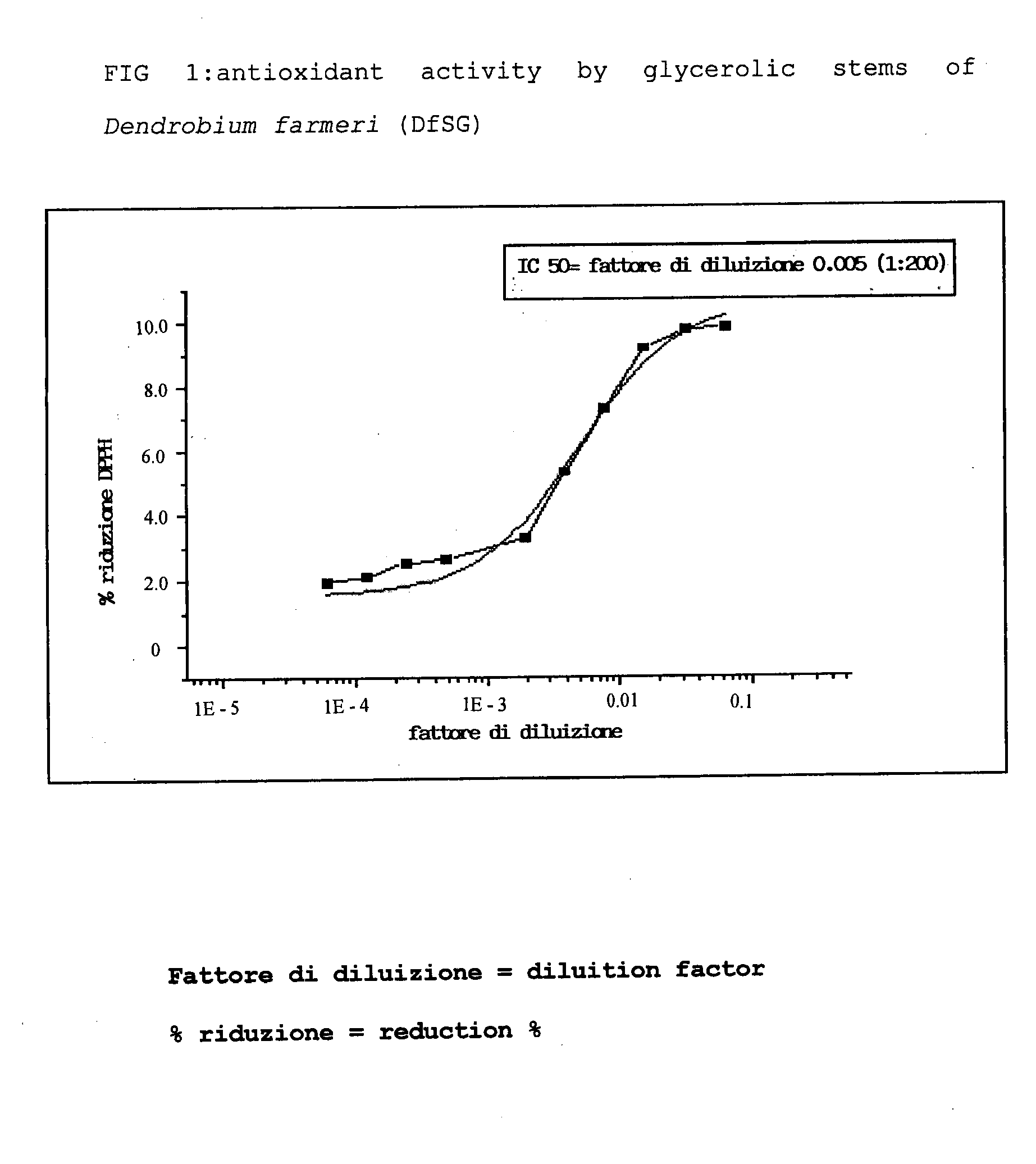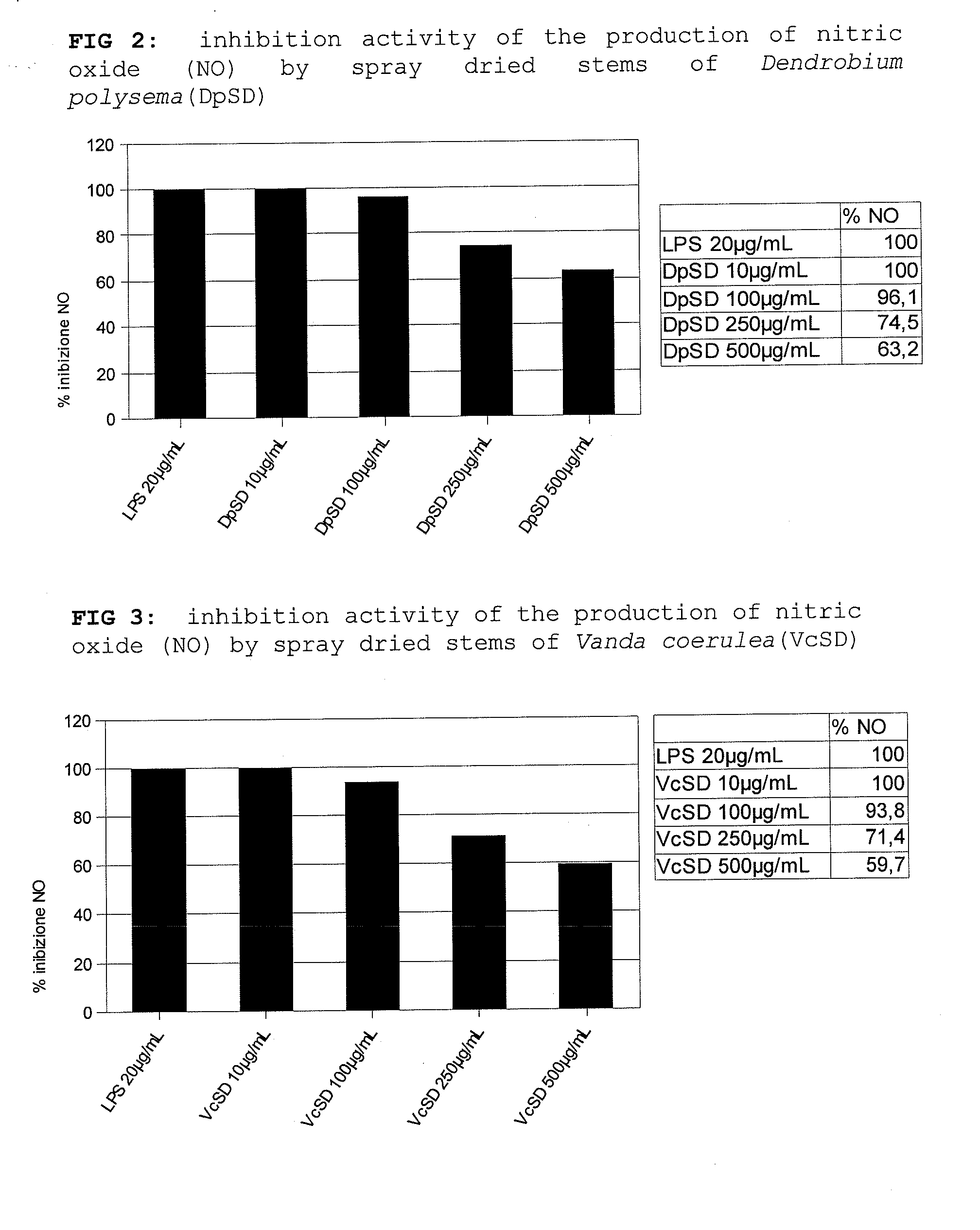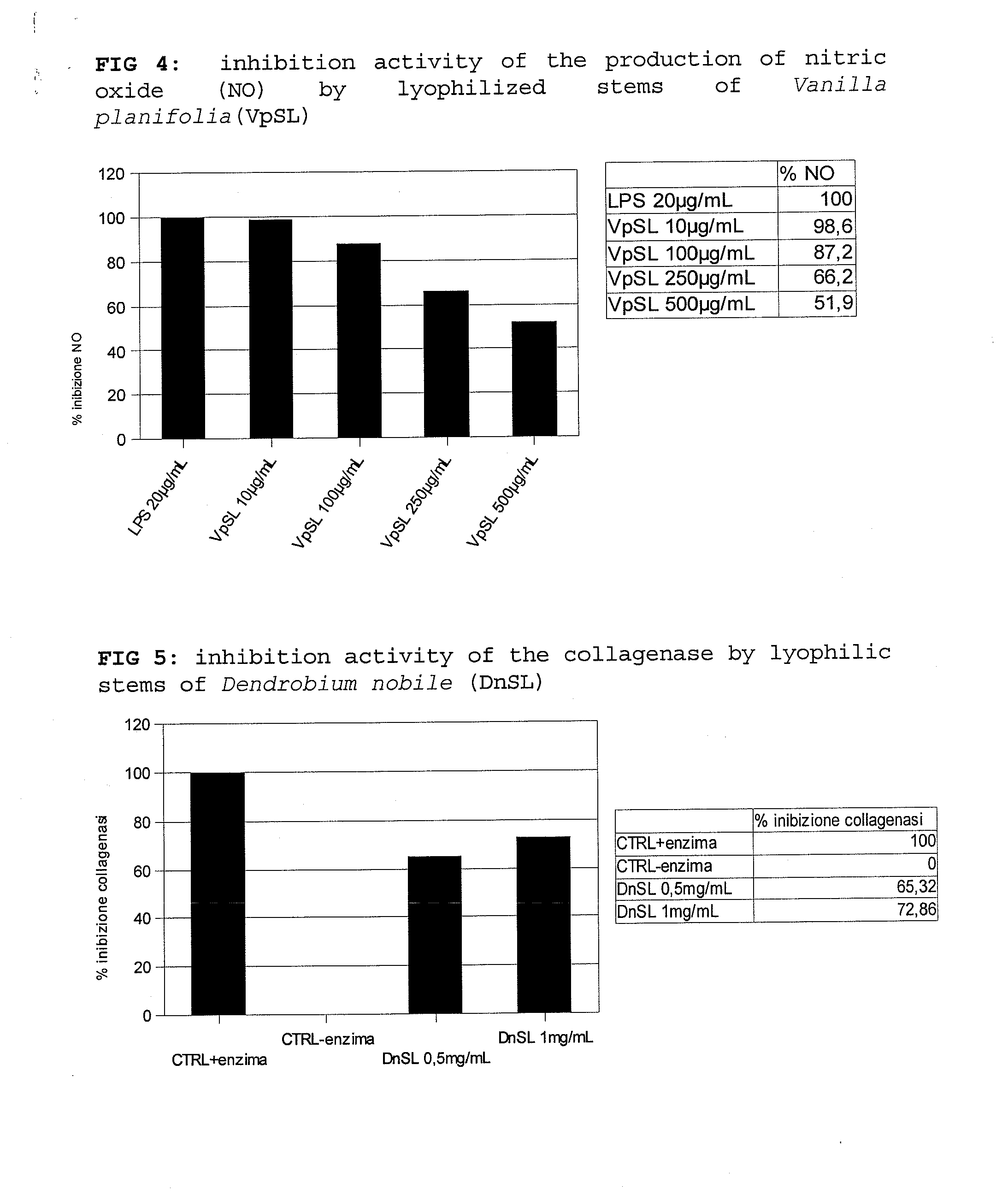Preparation and use of meristematic cells belonging to the dendrobium phalaenopsis, anisellia, polyrrhiza, vanilla, cattleya and vanda genera with high content of phenylpropanoids, hydrosoluble polysaccharides and extensins
a technology of plant cell culture and extensin, which is applied in the field of plant cell culture preparation of dendrobium phalaenopsis, anisellia, polyrrhiza, vanilla, cattleya and vanda genera, can solve the problems of limited availability of plant material, and achieve the effect of high extensin conten
- Summary
- Abstract
- Description
- Claims
- Application Information
AI Technical Summary
Benefits of technology
Problems solved by technology
Method used
Image
Examples
example 1
Preparation of the Glycerol Stems of Dendrobium Farmeri
[0090]Cells that were stabilized and selected as described above, deriving from the line of Dendrobium farmeri, grown on solid terrain (Gamborg B5 containing 1% (W / V) Agar, 20 g / L sucrose, 0.5 g / L vegetable peptone, 2 mg / L NAA and 1 mg / L Kinetin, final pH equal to 6.5) were introduced into 5 flasks with 3-liter capacity, containing 1000 ml of liquid terrain (Gamborg B5 containing 20 g / L sucrose, 0.5 g / L vegetable peptone, 2 mg / L NAA and 1 mg / L Kinetin, final pH finale equal to 6.5). The quantity of plant cells introduced into liquid terrain was equal to 5% W / V. The suspensions thus obtained were incubated at 25° C., in darkness and placed on top of an orbital agitator regulated at 120 RPM. After 14 days of incubation, the plant biomass (5 liters of cell suspension) was collected and filtered over nylon nets with 50 μm porosity. From 5 liters of cell suspension, cells with 400 g wet weight were obtained, equal to 20.7 g dry weig...
example 2
Preparation of the Lyophilic Stems of Phalaenopsis Aphrodite
[0091]Cells that were stabilized and selected as described above, deriving from the line of Phalaenopsis aphrodite, grown on solid terrain (Gamborg B5 containing 1% (W / V) Agar, 20 g / L sucrose, 0.5 g / L vegetable peptone, 3 mg / L NAA and 0.5 mg / L Kinetin, final pH equal to 6.5) were introduced into 5 flasks with 3-liter capacity, containing 1000 ml of liquid terrain (Gamborg B5 containing 20 g / L sucrose, 0.5 g / L vegetable peptone, 3 mg / L NAA and 0.5 mg / L Kinetin, final pH finale equal to 6.5). The quantity of plant cells introduced into the liquid terrain was equal to 7% W / V. The suspensions thus obtained were incubated at 25° C., in darkness and placed on top of an orbital agitator regulated at 120 RPM. After 14 days of incubation, the plant biomass (5 liters of cell suspension) was collected and filtered over nylon nets with 50 μm porosity. The collected cells were subjected to lyophilization. From 5 liters of cell suspensi...
example 3
Preparation of the Lyophilic Stems of Anisellia Africana
[0092]Cells that were stabilized and selected as described above, deriving from the line of Anisellia africana, grown on solid terrain (Gamborg B5 containing 1% (W / V) Agar, 20 g / L sucrose, 2 g / L vegetable peptone, 2 mg / L NAA and 1 mg / L Kinetin, final pH equal to 6.5) were inoculated in 5 flasks with 3-liter capacity, containing 1000 ml of liquid terrain (Gamborg B5 containing 20 g / L sucrose, 2 g / L vegetable peptone, 2 mg / L NAA, and 1 mg / L Kinetin, final pH equal to 6.5). The quantity of plant cells inoculated into the liquid terrain was equal to 7.5% W / V. The suspensions thus obtained were incubated at 25° C., in darkness and placed on top of an orbital agitator regulated at 120 RPM. After 14 days of incubation, the plant biomass (5 liters of cell suspension) was collected and filtered over nylon nets with 50 μm porosity. The collected cells were subjected to lyophilization. From 5 liters of cell suspension, 18 g of lyophilize...
PUM
| Property | Measurement | Unit |
|---|---|---|
| temperatures | aaaaa | aaaaa |
| temperatures | aaaaa | aaaaa |
| temperatures | aaaaa | aaaaa |
Abstract
Description
Claims
Application Information
 Login to View More
Login to View More - R&D
- Intellectual Property
- Life Sciences
- Materials
- Tech Scout
- Unparalleled Data Quality
- Higher Quality Content
- 60% Fewer Hallucinations
Browse by: Latest US Patents, China's latest patents, Technical Efficacy Thesaurus, Application Domain, Technology Topic, Popular Technical Reports.
© 2025 PatSnap. All rights reserved.Legal|Privacy policy|Modern Slavery Act Transparency Statement|Sitemap|About US| Contact US: help@patsnap.com



